Enhanced Edition
Silent Hill 2: Enhanced Edition is an ongoing project of enhancement packages that makes the PC version of Silent Hill 2 compatible with modern hardware and playable in a 16:9 widescreen aspect ratio, while improving visuals, audio, and bugs. Examples of what Silent Hill 2: Enhanced Edition provides are: The use of a widescreen camera; high definition resolutions; upscaled fonts and 2D images; PlayStation 2 quality audio, fog, and shadows; restored post-processing effects; better controller support; and much more. Made by a collaborative team of programmers, modders, and artists, the use of these enhancement packages makes for a definitive Silent Hill 2 HD experience. Visit project's official website to download required files and find extensive installation and configuration guides. Note: Since Silent Hill 2 on PC is not currently available in any digital store while original physical copies are hard and expensive to get, you can obtain original game's copy from My Abandonware. |
Demonstration Trailer & Update Videos
Screenshots
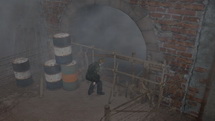
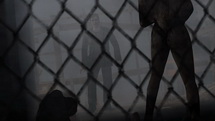
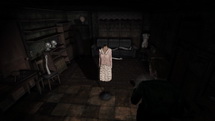
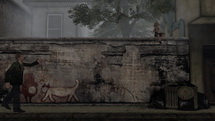
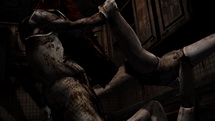
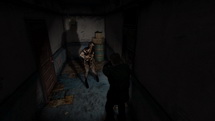
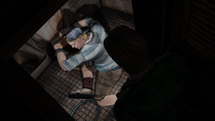

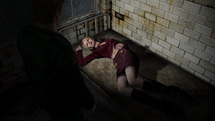
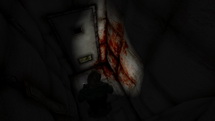
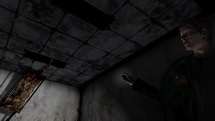
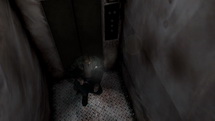
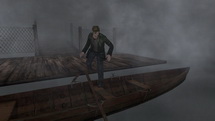
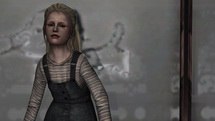
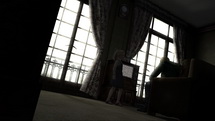
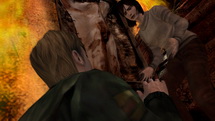
|
Interview with the Enhanced Edition Team
1) Where did the idea for the Enhanced Edition come from, and how did each of you get involved with the project? Ratiocinator: Back in late 2016, I wanted to play Silent Hill 2 again. The HD Collection was out of the question for me due to virtue, so that left me with two choices: Play the PS2 or Xbox version on original hardware, or play the PC version. Unless you still own a CRT television (which most people don't), playing your PS2 or Xbox console on modern displays typically produces a very muddy, blurry, and overly dark image. This made it exceptionally hard to play a dark horror game like Silent Hill 2. I then tried out the PC version, as it can display nicely on modern screens, but the PC version has a lot of issues going on with it. I searched online for any fixes and found ThirteenAG's and Aero_'s Widescreen Fixes Pack (WFP) for Silent Hill 2 PC, which improves certain aspects of the game. Their WFP was great, but there was still a lot of things that could be improved upon for the game. Given my intimate knowledge of the title, I'd submit tickets for other problem areas in the game. As the scope of these fixes and enhancements grew, so did the number of people who became involved. This includes Elisha (our lead developer/programmer), Aero_ (one of our lead modders), and Andrew (another of our lead modders) joining the team, among others. As time went on, the gamut of our work would eventually grow beyond a "widrescreen fix" into its own thing more fittingly known as the Enhanced Edition. I act as the project manager for the Enhanced Edition, along with doing graphic work and amateur modding for the game, and maintaining the project’s website, Twitter, and YouTube pages. Aero_: I got involved with Silent Hill 2 in 2016. I decided to make a widescreen fix for the game with the help of another modder named ThirteenAG. I did the low-level programming and research and he wrote everything in C++. We also made one for Silent Hill 3 around the same time. They included some improvements, like the features from the SH2Proxy mod, but not much else. That was all I wanted to do and I was happy with the results. 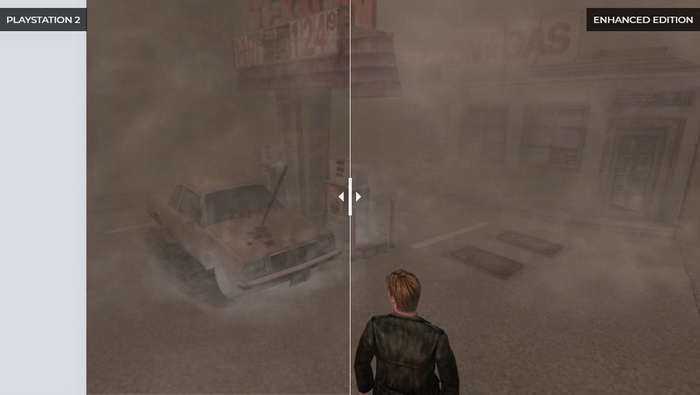
It wasn't until Ratiocinator (and a few other people) got in contact with me that I became aware of the various problems the PC version had: A sluggish camera, double-sided flashlight, and broken cutscenes, just to name a few. Normally I wouldn't have cared that much, but the PC version was the only way I could experience Silent Hill 2 at the time. I didn't have access to a PlayStation 2, emulation was not a possibility for me, and the Silent Hill HD Collection was a well-known disaster. I had all the motivation I needed to get involved. The problem was that I wasn't much of a programmer. My understanding of x86 assembly was very basic compared to what I know now, and it's only recently that I've started to learn C++. I know that sounds surprising to some people, as my abilities are often overestimated. So, while I could fix some of the problems that were reported, I couldn't fix all of the problems. I believe Elisha's involvement was what truly jump-started the entire project. He was one of the reasons we were able to port the PS2 audio to PC. With his help we were able to solve many problems that we couldn't before. This in turn attracted more people, and the project snowballed into what it is now. Bigmanjapan: Upon the PC version's release, there were multiple minor attempts at enhancing the game, predominantly made by programmers who were into commercial pirating (which involved cracking copy protections and making translations for unsupported languages). Those were very basic tweaks — i.e., widescreen support. As time went on, more hobbyist programmers became interested in understanding various aspects of the game’s engine which led to an increase in cumulative knowledge about the title’s inner workings. In 2016, I became interested in how the game’s randomization worked, which eventually led me to documenting the memory layout. The research material I compiled was collecting dust until Ratiocinator contacted me in late 2017 to ask if I could look into an issue with Silent Hill 2 PC’s camera system. It turned out I could be useful in fixing other issues as well, and became a regular on the Enhanced Edition team from there. Elisha: Just a little background first: I grew up playing older games on my IBM 8088, then 386, and later Pentium. Initially I used DOS, then practically every version of Windows from 3.11 through 10, including some of the less common versions, like Windows NT 3.51. Windows XP could play practically any IBM-compatible game. Windows 7 had some compatibility issues, but most games still worked. But starting with Windows 8 and then Windows 10, many of these older games no longer worked. Since Windows 10 looked like it would be here for the long term, I began a personal quest to see if I could get all of my older games working on this operating system. This led me to a number of useful, relevant tools, including an open source program called d3d8to9, which converts DirectX 8 games to DirectX 9 to make them more compatible with newer operating systems, and it does a pretty good job of it. However, one of my games had some graphical glitches with this tool. Since d3d8to9 was open source, I decided to see if I could address the glitches and submit my changes back to the project. I had never really worked with DirectX before, but ultimately, I was able to fix the problems. This got me to see if I could fix other issues for games with d3d8to9. All in all, I put in over 50 fixes for the project. It was this d3d8to9 project that got me involved in the Silent Hill 2 community. The PC version of Silent Hill 2 uses DirectX 8 and Ratiocinator, before I knew him, opened a ticket on the d3d8to9 issues page explaining some problems the game had when using this project. I took it upon myself to see if I could address these concerns. After fixing these issues, Ratiocinator asked me for additional help with items specific to Silent Hill 2 PC, which I did. One of the first big issues he requested help with was being able to modify the sound files. After some weeks of debugging and trying to analyze the code to figure out how to change the audio files without crashing the game, I was able to write a small plug-in that would hot-patch the game’s memory to allow us to load high fidelity sound files. However, my involvement didn’t stop there. At this point in development, the current method of improving Silent Hill 2 PC consisted of running/using various, separate tools concurrently to try and make one cohesive solution for the game. I looked at all these tools and decided to see if I could merge them into a single package. Not only was I able to merge these tools into a single package, I was also able to add many new, additional fixes and updates along the way. Examples include a fix to allow high fidelity sound, high resolution textures, custom game mods, window mode options, and a no-CD patch, among others. All of this collectively turned into the SH2 Enhancements module, which is the “brains” of the Enhanced Edition project; the code that makes the project run and work as people know it today. As the lead developer for the Enhanced Edition project, most of the actual C++ code goes through me in some form or fashion, either for approval or for creating the final production code. Not to say that I am doing all the work, though. Each member of the team has made significant contributions to the project. The C++ code is only one aspect of the project. There are many other aspects involved in a project like this, such as updating the graphic files, debugging aspects of the game, finding addresses of malfunctioning code, updating map files, creating web documentation, video editing, etc. 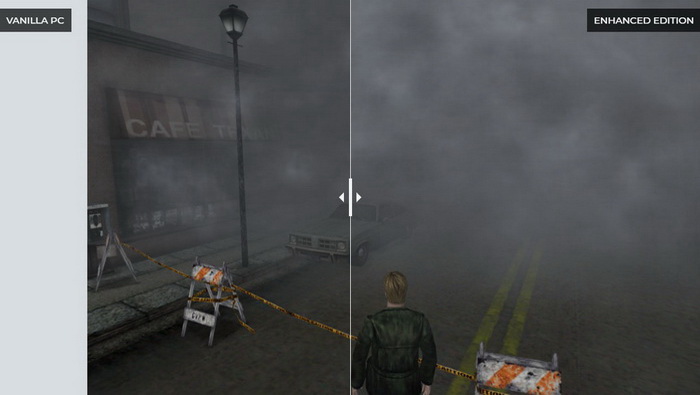
2) How difficult is it to modify, debug, and play around with the assets and code for such an old game? Have you had to come up with any innovative technologies to get the end result you’re looking for? Bigmanjapan: When it comes to games made in the early 2000s, one should understand and adjust to the peculiarities that game development had at that time. Examples include games being written in pure C language, a lot of elements being hardcoded, ragged compatibility with GPUs, and more. It has its own advantages (static memory layout) and disadvantages (file size limitations, spaghetti code). In addition to the above, Silent Hill 2 had a troublesome platform porting history. The original PlayStation 2 build was ported to Xbox by the Japanese team (members of which were apparently not well-versed in developing for the Xbox console), and this Xbox port was then used by Creature Labs as the basis for the PC port. Since its very release, the PC port was heavily criticized by the gaming community and rightfully so — the default PC build exhibits a variety of visual/audio bugs and compatibility issues. But little does anyone know that the blame put on Creature Labs is heavily unfounded. Our team was very lucky to have Dean Calver, Creature Labs’ lead programmer, visit one of our ongoing project discussions and provide insight on his team’s experience porting the game to PC. Right from the start his team faced multiple obstacles. To name a few, they had to translate the source code comments themselves, use an underdeveloped audio driver due to software licensing issues that Konami hadn’t resolved in time, and were required to fit the game on as few CDs as possible to maximize sales, despite Creature Labs wanting to ship the game on DVD for ample storage space. This requirement to fit the game on just three CDs forced their hand into making the difficult decision of determining what content had to be compressed and reduced in order to meet this limited storage requisite. On top of that, their team consisted of only four people and they had to work on a tight schedule of only 4-5 months. Needless to say, it was a massive headache to tailor the PS2/Xbox graphics code to run on the wide variety of PC GPUs of that time while keeping the visuals as close as possible to the original. With the circumstances given, the PC port could have turned out way worse than it did. Most of the work we do is innovative in the sense of doing something that no one else did before. Just like Mr. Calver’s team had to come up with clever solutions to the porting process issues, we try to be smart in enhancing their work in our turn. Aero_: I find it very challenging. Even things that appear simple on the surface can take a lot of time and research. In one of our updates, we upscaled various textures for the game. To do this, we had to decipher the file header and manually replace the image data with our own data. Fortunately for us, TEX files are simply DDS files with custom headers. Replacing their data was easy once we understood which bytes in the header determined the resolution and format. The next problem was that our new textures made the game very unstable. It often corrupted other textures or caused the game to crash. Elisha is more familiar with this problem than I am, but I believe the new textures were overwriting data in memory. The allocated memory for each texture is hardcoded, so we had to locate and increase the amount, then update their pointers so the game knows where each texture is located. Last but not least, we had to correct the scaling of the textures. This was also hardcoded. With our new textures being inherently higher resolution than the original textures, they appeared very large in-game. I was given the task of researching a solution to this, since I had more experience with that part of the code. The end result was the development of our own scaling code that calculates new values based on the resolution and aspect ratio of the texture. 
Elisha: Many developers add features into their games to prevent hacking. However, Silent Hill 2 PC only includes a CD check protection feature, which was removed later on in an official patch for the game. Even though the developers never added any further protections to the game, it seems that there are obstacles to overcome in every area we try and improve. These issues come not only because of design decisions, but also because Silent Hill 2 was initially developed for console (PlayStation 2 then Xbox) and then ported to PC. For example, when we tried to update the audio files, we found that the file addresses and sizes for every individual audio file was hardcoded into the binary. This is very unusual for a PC game and almost certainly a byproduct of being ported from the console version. There is a similar problem with the texture file addresses/sizes being hardcoded, as well. But it does not stop there. The way graphic files are used in conjunction with DirectX makes it very painful to try and add simple features like anti-aliasing or anisotropic filtering. The fact that this game was ported from console to PC makes it hard enough, but even the console versions of the game experience similar issues. Silent Hill 2 was initially designed for the PlayStation 2, a console which can support 60 fps. However, the game was coded to use only 30 fps on all platforms. If you try and force the game to use 60 fps, whether on PS2, Xbox, or PC, it can lead to graphic and sound issues. These issues became exacerbated in the PC port, though, as the ability to unlock its framerate is easier to do on PC by the end-user than on consoles. Many of the things we do in the Enhanced Edition project are unique to Silent Hill 2 and thus innovative in their own right. Silent Hill 2 PC was designed without any thought of it being modded. As such, there is no built-in modding features. Typically, what is done by other mod packages in this scenario is to overwrite the original game files and replace them with the modded files. This is okay, but it makes it hard to go back to the unmodified version of game, if you wish to do so. With the Enhanced Edition, we devised a feature that allows us to add all of our modded files into a separate and unique folder, while still having the game detect and read these files. This allows us to update any part of the game without replacing or overwriting any original game files. In addition, multiple mod folders can be created allowing you to easily switch between any mod with the flick of a switch. Today, of course, there is only the Enhanced Edition project. But if someone in the future wants to make a new mod, they can simply create a new mod folder and add all their mod files there, allowing for expansion in the future. Another innovative solution we developed was a fix for the Windows Game Explorer. The Windows Game Explorer is a feature of the OS (removed in the latest update of Windows 10) which allows you to view and play all your games from one location. However, Microsoft has long neglected this feature and some of the later patches in Windows 7 caused Windows Game Explorer to make a game hang on launch. This has been a known issue and the typical solution mentioned online is to either delete the Game Explorer files in the OS or delete the Game Explorer registry keys. Either of these methods require the user to manually modify their OS, which isn’t ideal. We discovered a way to “unhook” Windows Game Explorer from Silent Hill 2 PC on load, so that it is unable to cause the game to hang. Because of this, the user does not need to modify their OS manually and Silent Hill 2 PC will just automatically work without any hassle. Ratiocinator: We’ve also been using old-but-tested software to help with our development process. Applications such as the SH Texture Explorer and the SH Level Viewer, both made by a programmer who goes by the online name “John_Modest”, proved beneficial in speeding workflows by helping us determine what files we were needing to find and edit. Then, as time went on, other fans of the project offered their programming and modding talents to further help the cause. The sh2msgconvert tool is a new, modern, and more robust text string editing tool. Thank you Infrid and IlDucci for this great tool! 
3) Is it true that you often rip textures, sound files, and cutscene assets right from the PS2 copy of the game? What lengths have you gone to to get the highest quality assets as possible? Bigmanjapan: Using PlayStation 2 assets is definitely beneficial since the Xbox and PC ports received downgraded versions of certain audio/visual components. If not outright replacing assets with better ones, researching the originals could provide hints on how to fix issues in the default PC files. Reverse engineering file formats and writing tools to manipulate the assets is as far as you can go in this field. And luckily, for everyone who wants to mod this game, incredibly skilled programmers have already developed the tools for basic asset manipulation. As Ratiocinator mentioned, the very first tools were created in 2004 by “John_Modest”, a Russian programmer. They still hold up well, although exhibit some quirks and limitations. With recent, renewed interest in Silent Hill PC games, I am sure a new wave of talented programmers will create more sophisticated software that will allow more freedom in modding the game. Ratiocinator: Yes, for example, team member Nisto, who is an absolute audio genius, spent months reverse engineering how various Konami titles on the PlayStation 2 call, process, and arrange their audio samples on the console, which of course includes Silent Hill 2. This research and development ultimately led Nisto to create a tool called sh2ex, which extracts internal filesystem and sound data for the PlayStation 2 version of Silent Hill 2. Through his reverse engineering of Konami’s PS2 sound data architecture, along with his sh2ex tool, we were able to extract, obtain, and convert the PS2 sound files of Silent Hill 2 in lossless WAV format. His script not only compiles the sound samples back into their final arrangements—complete with correct pitch and time shifts—but even retains the reverb in audio files that used it in the PlayStation 2 version! Needless to say, Nisto’s work was essential in making improved audio for the project possible. 
Elisha: We have ripped pretty much all of the full screen images, sound files, and cutscenes from the PS2 version of the game. At this point, we have replaced virtually all of the sound files and cutscenes with their PS2 equivalents. In a couple of places, we were unable to use the PS2 audio files because either it did not exist (meaning sounds unique to the Xbox/PC version) or the PC version was of higher quality. For instance, after reviewing all of the dialogue audio, we found that a number of these files were actually higher fidelity in the PC version, when compared to the PS2 version. So, in those cases, we kept the PC version. For the background audio, there were some files we could not locate a PS2 equivalent of; additional tracks we believe were either unique to the Xbox/PC version, or never actually used in the game. So, for the Enhanced Edition project, out of the 417 sound effect files used in the game, over 400 are taken from the PS2 version. Of the 159 dialogue files, 107 of them are from PS2. Of the 150 background music tracks, 143 come from PS2. And the remaining tracks, as mentioned, are using the original PC version due to being the same or higher quality. The time we spent on the audio portion of this project alone was a yearslong effort, with hundreds of hours of work put in. But I think anyone who hears the original PC version’s audio next to the Enhanced Edition’s audio can really feel the difference! For the cutscenes, we use the PS2 versions as a base, traditionally upscale them, and apply conservative touch-up filters that include de-haloing, deinterlacing, denoising, etc. 4) Was the Enhanced Edition influenced by the disappointing Silent Hill HD Collection at all? Additionally, do you ever use the HD Collection as a lesson in what-not-to-do while doing your work? Ratiocinator: Yeah, I’d say there’s influence by the HD Collection. The HD Collection isn’t ideal to play, but the unfortunate truth is that it’s one of few feasible options for most people to play Silent Hill 2 in this day and age. Going back to my personal plight from before: Most people no longer own a CRT television, a lot of people don’t hold on to their older consoles, and many don’t use specialized hardware such as the Framemeister to make old consoles look better on newer televisions. So having an option to play the game on modern displays/hardware through the Enhanced Edition, without the glaring issues seen in the HD Collection, just made sense. More options is always a good thing, and this project gives players another avenue to experience this title in a new way. 
Aero_: Absolutely. There are many aspects to the HD Collection to consider, and some of our decisions have definitely been influenced by them. The PS2 version is often used as an example of what we should do, while the HD Collection is often used as an example of what we shouldn't do. In fact, you can find comparison screenshots on the website. If it looks worse than the HD Collection then you know we did something horribly wrong.
I would go so far as saying that if the HD Collection wasn't as disappointing as it was, then the Enhanced Edition project wouldn't exist. At least not the way it does now. Maybe in that reality Konami releases a PC port of the HD Collection and we improve that instead. It's fun to speculate what could have been. 5) Do you ever have to wonder “what would Team Silent do?” while updating and making changes to the game? Is there much wiggle room for artistic freedom or are you committed to staying as close to the PS2 release as possible? (feel free to use specific examples here) Ratiocinator: Yes, it’s something that’s always on the mind. While practically all of Team Silent don’t have an online social presence, Mr. Masahiro Ito (Art Director of SH2) is socially active and can lend some interesting nuggets of information for us to work from. But on the flipside, Mr. Ito is also coy with many things. There are many times where, when asked about specifics of the game, he’ll often respond with, “I’ll leave that to your imagination.” In many of these instances, it can be inferred as “it’s best if there is no answer,” and in other instances, it can be inferred as “I don’t remember anymore.” As an example: We asked him if Mira the Dog was supposed to be looking at blank monitors during the DOG Ending for Silent Hill 2. He replied saying that no, she wasn’t meant to be, but they couldn’t add monitor footage due to limitations of the PS2. Then, when asked what she was supposed to be looking at, he simply said, “I’ll leave that to your imagination.” So we held a contest for our project to have fans vote on what they’d like to see on these monitors. The winning vote was “security camera” style shots from key points in the game. I'm glad that choice won as it's rather fitting for the ending; the joke being that Mira was the cause of everything James went through so she's "always watching him." 
We ran this contest because it’s a joke ending that’s not meant to be taken seriously, we wanted to have fun with it, and we wanted to get the fans involved. After all, this project is made by fans, for fans, so we might as well have some fun! But to parallel this, we’ve also taken notes from the wonderful people who are working on the RE4 HD project, as well. The RE4 HD team is lovingly and painstakingly recreating textures for the game in high definition. Not only that, but they’re correcting UVs, adjusting geometry for better presentations, adding new 3D assets in areas for added polish, updating obtuse aspects for better user accessibility, and more. This spirit of staying true to the overall, bigger picture of the game while enhancing various aspects within is part of RE4 HD's ideology that we’re mirroring. In summary: This project isn’t about being 1:1 to the PS2 version, but staying true in spirit to the game in all areas that matter most, while having rational, artistic freedom to keep us interested and engaged with the project. Although, we naturally reference and use the PS2 version as a base for many of the things we do. (PS - If you haven’t checked out the RE4 HD project, be sure to do that... They're awesome people!) Bigmanjapan: While the PS2 version is considered to provide the most authentic experience by many, it still exhibits multiple visual bugs and is generally limited by the platform’s hardware. In this sense, we make improvements to the technical side of the game that the original developers would surely agree upon while leaving the story telling aspects untouched. For example, text is displayed at a low resolution on PS2 when compared to the Xbox version, which allows for a slightly higher resolution rendering. As soon as Team Silent had a chance of improving this aspect of the game they did so, outlining the trend for further improvement. Our team continued this line of work, refining text display to a point where the PC version now has the best-looking text. 
I am proud to say that our project rectifies several bugs that all releases of this game have. The most notable ones are desynced animations of Red Pyramid Thing during one of the hospital cutscenes, a sliced-up animation of James getting onto the rowboat, and an awkwardly visible wall piston that shows up during one of the cutscenes with Angela. The latter was even attempted to be fixed by Team Silent during their porting of the game to Xbox, although was done so in a very slipshod manner leaving an out-of-place black texture in its place. Sometimes there is no “right” solution. To accommodate the long loading times on console releases, the game uses an animated loading screen that shows James’ footstep marks. The PC version’s load times are practically instant on modern computers, making this load screen essentially never show up. It might be an insignificant detail but it’s still a part of the game. We could code the loading times to be artificially longer so you can see the load screen, but you have to make decisions of what’s more important for the end user experience: A smoother game experience (no load screens) or preserving a detail that was only added due to limitations of its time (load screens). Elisha: Most of my focus has been on the technical aspects of solving individual problems for the Enhanced Edition project. I do many things that have no bearing on the game play itself. For instance, I work on ways to make the game run smoother and without crashing on Windows 10, resolve glitches that may only exist on specific video cards, or coding up a fix for an issue that was found by another team member. But for all of us, the PS2 version is considered the bar we want to achieve with many of the fixes and updates we perform. 6) Silent Hill fans are notoriously fickle, have you received any negative feedback about artistic or technical changes to made to Silent Hill 2 with the Enhanced Edition? (Example: The power cord from the fridge to the wall outlet in the hospital) Ratiocinator: If you post anything on the internet, there will be negative feedback. And our project is no exception. To give perspective: We’ve had complaints that simply allowing increased resolutions and widescreen camera support was sullying the original vision of game. We’ve even had complaints in adding a missing lightbulb and support wires to a lamp, so its lampshade would no longer be floating in the air! So changing less silly things like numbers, text, or geometry will undoubtedly make some unhappy. As another example, we can take an educated guess that the Alternate Hospital fridge being powered (lit) might have been done later on in the game’s development. The developers might have thought, “How can Maria see that ring in the fridge without James’ flashlight being directly aimed inside it?” So they added a light in the fridge to give context to how Maria can quickly/readily see the ring. The fact the fridge’s light source doesn’t touch/affect James and Maria can lend further credence to this possibly being adjusted late in development. So we’ve added a power cord to the fridge to help compliment this adjustment. 
But happily, the majority of fans see the “bigger picture” of the overall intent/goals of this project and support us, even if they have disagreements on some things. Blind loyalty is never a good thing, no matter what it’s for, so to have someone be civil in their disagreements but can still support the overall project means a lot to us. Aero_: All of the time. I think most of us have accepted the reality that we can't please everyone. Ratiocinator probably deals with it the most since he's the guy on the front lines handling the social media for us. My personal take is this: If you can't provide an actual argument for why something should or shouldn't be done, then your opinion is useless. The original game isn't a flawless masterpiece that can never be improved on. It has its share of bugs, errors, and limitations like any other video game. The good news is that our project is modular, so almost everything can be disabled, removed, or adjusted if you think a floating lamp shade, an unplugged refrigerator, or grammatical errors are crucial to the Silent Hill 2 experience. 7) In light of Konami’s neglect of Silent Hill, do you ever feel that the onus to preserve Silent Hill 2 for future generations falls on you? Elisha: Yes. One of my goals is to try to help the community preserve older games. If Konami would have released a proper update for Silent Hill 2, then our work may not be needed. But for me, it is great to know that I can have some part in preserving these older classic games. Aero_: The great thing about PC gaming is that the games we play now should still be playable 20 years down the road. It's nice to know that our work will likely benefit people for a very long time, especially due to its open source nature. However, speaking for myself, I don't believe it's our responsibility to preserve anything. That's Konami's job. I see this as an opportunity to improve on what we currently have. If that also acts as a form of preservation, then that's cool too. Ratiocinator: I know what we’re doing is appreciated by many and, at the end of the day, I am happy our team can give other fans (both new and old) another outlet to experience this beloved game. Bigmanjapan: The Enhanced Edition project is a byproduct of people who know too much about this game and have the desire to solve riddles and work together. If my knowledge can benefit other peoples’ playthrough experiences, then I am glad to provide the research results for the project. If, for some reason, this public work is to stop now, I would still continue to dig into this game by myself. Bear in mind that the Enhanced Edition project is open source and anyone who is willing to help in the game’s preservation can do so. 8) What does Silent Hill 2 mean to you? Does your love for the game help shoulder the burden of all the work that comes with the project? Ratiocinator: Silent Hill 2 means the world to me. I’ve been a fan all my life—having created the first dedicated site for the game back in 2004 called Letter From Silent Heaven, creating a Silent Hill forum, collecting merchandise for the game, and archiving/preserving old media and websites for the series. There was a point where I was playing/beating the game at least once per week, which lasted over a year. Throughout high school all I would ever do is doodle SH2 images while in class. I even made a life-size bust of James in my Pottery II class. (It wasn’t amazing, but I tried my best!) I studied the environments of SH2 religiously and, in doing so, it is what ultimately led me to get a BFA in Interactive Design and Game Development, specializing in 3D environment art. As you could imagine, most of my environments throughout college had a rusty and decrepit vibe to them. The way this game affected my life cannot be overstated and I can confidently say my love for the title has been a constant drive in working on this project. Bigmanjapan: In some strange manner Silent Hill 2 was always a background to many joyful and dreadful events in my life. Even the very first time I experienced a horror computer game was watching my brother play Silent Hill 2 at night. The degree of my disbelief that games can be like that was so great, that I remembered the room in a photographic manner. To this day, many of my adolescent memories grow real when I do another playthrough. Only Silent Hill 2 can offer this to me and it’s probably more important than the game itself. We wouldn’t have advanced so far if this project was any kind of burden. For almost twenty years Silent Hill 2 manages to maintain a feeling of something still left unexplored and keeps us returning to it again and again. Aero_: I don't have an emotional connection to Silent Hill 2 like others may have. I'm relatively new to Silent Hill. I never got to experience the games as a child. I was far too scared to play any horror games back then. The Silent Hill series was my introduction to the horror genre though, so I think it's my appreciation for the series as a whole that drives me forward. I haven't experienced anything else like it: The atmosphere, the music, and the story. I've enjoyed all of them to some degree, even Origins, Homecoming, and Shattered Memories. 9) Are there plans to create an Enhanced Edition for other older Silent Hill titles? Ratiocinator: We all work on this project for free and on our spare time, so to keep our expectations and sanity in-check, we want to make sure we finish one project (SH2:EE) before moving on to anything else. But once we get Silent Hill 2 to a place we're happy with, you never know what the future may bring. :) Closing remarks: Ratiocinator: I’d like to extend my warmest, heart-felt thanks to all team members of the Enhanced Edition project. I don’t think it’s possible to fully explain just how important each and every one of you are to this team. Your love and admiration for this game cannot be measured, but is wonderfully showcased with all you do to contribute to the project. Thank you all so much. |
